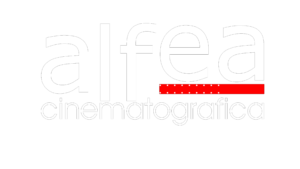Backstage and Insights
The Docufiction "Per un Nuovo Domani" produced by Alfea Cinematografica and Rai Fiction, released on Friday 26th of January in prime time on Rai 3, had a great success with more than 1 million viewers. In this article you will discover the backstage of this production as well as more information related to the story of the docufilm, its structure and the historical events on which it is based.
"We inform this Ministry that in this province and more precisely in the municipalities of Garfagnana there are about two hundred beds available. (...) It should be noted, however, that any direct contact of interned elements, and therefore suspect and treacherous, with the simple and gullible population of the rural centers of the Province, where the vigilance and control of the Police Bodies is not always easy, could have a harmful influence on the public spirit of those areas, also determining particular situations, which it is not possible to predict now".
With this answer to a circular telegraph from December 31st 1941, the Prefect of Lucca, in January 1941, identified the Garfagnana as a suitable location for the internment of foreign Jews in Tuscany. This is where starts the forgotten story of a small community of over 70 foreign Jews who between 1941 and 1943 was transferred to "free internment" in Castelnuovo of Garfagnana, a rural municipality of approximately five thousand inhabitants in the mountain region between the Apuan Alps and the Tuscan-Emilian Apennines. Through the gaze of Israel Meier (Neri Marcorè) and of the other protagonists of the story, the storytelling retraces those two years of forced coexistence: the initial difficulties of integration with the local inhabitants, the coexistence with the strict prohibitions and the continuous humiliations, the solidarity of the population. However the horrors of World War II will end up upsetting also this reality.
This is their story.
The Docufiction consists of a part of fiction, a part of direct narrative and another part of interviews.
The fiction part, i.e the fictional reconstruction of the story, which sees the most emotionally significant and touching aspects of the lives of the community, such as the report of the Jewish doctor, Dr. Meier, with all the villagers who, secretly, turned to him, and his role also as a reference point of the community for the Authorities; the loves that matured and, for different reasons, dispersed; the gaze of those, even Italian and within the system, who feel that they must act against something they deem unfair; the relationship with the police and the contrasts with part of the citizens; the attempt to build a life as normal as possible, with the synagogue and the school; the increasing difficulties of internment (hunger, cold, increasing restrictions); the capture of those who gave themselves up and the getaway of those who were saved.
The direct narrative part of our main characters (i.e, the actors who play the main characters, including primarily the protagonist Israel Meier/Neri Marcorè) who, like real storytellers, inside a "non-place", addressing directly to the audience, tell in first-person narrator their own experience and the necessary elements for the understanding of the whole story. Thus sewing an empathic partnership between the audience and the narrator, full of intensity and of vibrant understanding.
The part of interviews, real to the few living witnesses of the story, who will reveal themselves in the final part of the story, pulling its strings.
To complete the whole, the archive images: precious films, photographs and documents of the narrated story most of them kept at the historical archives of the CDEC (Fondazione Centro di Documentazione Ebraica Contemporanea Onlus) and of the Municipality of Castelnuovo Garfagnana, as well as an unpublished video testimony of Leo Verderber (kept at the Archives of the USC Shoah Foundation in Los Angeles), the only survivor of Auschwitz (along with Lotte Wallach) of the deported Jewish community of Castelnuovo.

Vicolo Scaramucci, 4 56125 Pisa (+39) 050.24600 info@alfeacinematografica.com
Monday to Friday: 9.00 AM – 6.00 PM
| Cookie | Durata | Descrizione |
|---|---|---|
| cookielawinfo-checkbox-analytics | 11 months | This cookie is set by GDPR Cookie Consent plugin. The cookie is used to store the user consent for the cookies in the category "Analytics". |
| cookielawinfo-checkbox-functional | 11 months | The cookie is set by GDPR cookie consent to record the user consent for the cookies in the category "Functional". |
| cookielawinfo-checkbox-necessary | 11 months | This cookie is set by GDPR Cookie Consent plugin. The cookies is used to store the user consent for the cookies in the category "Necessary". |
| cookielawinfo-checkbox-others | 11 months | This cookie is set by GDPR Cookie Consent plugin. The cookie is used to store the user consent for the cookies in the category "Other. |
| cookielawinfo-checkbox-performance | 11 months | This cookie is set by GDPR Cookie Consent plugin. The cookie is used to store the user consent for the cookies in the category "Performance". |
| viewed_cookie_policy | 11 months | The cookie is set by the GDPR Cookie Consent plugin and is used to store whether or not user has consented to the use of cookies. It does not store any personal data. |